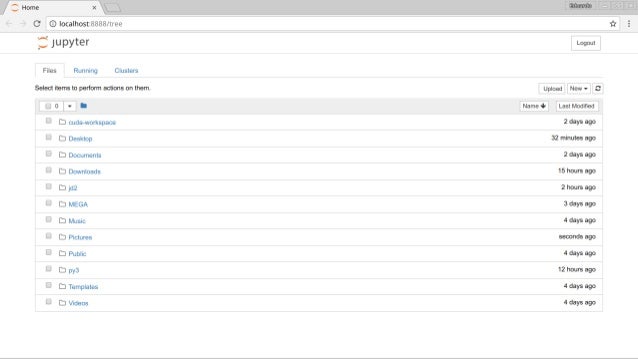

When done, choose File:Shutdown to exit JupyterLab.

Servers pre-configured for WebMO are available at This is most easily done by clicking the Jupyter link in the navigation bar, followed by Open Jupyter button.
#Jupyterlab online install#
provides an executable Jupyter notebook environment for a GitHub repository, thereby eliminating the need for each user to install JupyterLab on their local machine: Option 2: MyBinder.Org can host an instance of JupyterLab and reference a GitHub repository of notebooks When done, choose File:Shutdown to exit JupyterLab.If not already done, install the webmo python library by typing "%pip install webmo" in a cell and clicking the Run icon (or pressing control-Enter).Open and use an existing Python3 notebook (*.ipynb)Ĭlick the Python 3 Notebook icon to open a new notebook.From a command prompt (Windows) or Terminal (Mac/Linux), navigate to a jupyter folder, and run JupyterLab on the local machine:.Install the downloaded version of Anaconda.
#Jupyterlab online download#
#Jupyterlab online software#
A Jupyterlab server can also be accessed on the web, which has the advantage of not having to install any software on a user's computer.

The JupyterLab server is often installed on a user's local computer, which has the advantage of being able to locally save Jupyter notebooks (programs and results). JupyterLab is a web-based Python programming environment. The WebMO administrator can add additonal Python programs by placing them in the /REST/templates directory. These demonstration programs are available from the Jupyter link in the navigation panel on the View Results page. Thermochemistry: use computed energy and frequencies to calculate and graph internal energy and C vib as a function of temperature from a frequency job.Orbital diagram: graph orbital energy levels from a molecular orbital job.Geometry convergence: graph convergence of energy and rms geometry change from an optimization job.Coordinate scan: graph coordinate scan energies as a function of geometry change.Print results: display available job results in formatted JSON.Several demonstration programs are provided within WebMO to illustrate this capability: When viewing WebMO results, one can invoke a JupyterLab session that download job results and perform subsequent calculations and/or display graphical analysis. WebMO Enterprise includes a built-in interface to JupyterLab. JupyterLab is web-based, so all interaction is done through a web-browser. An increasingly popular Python environment is JupyterLab, which includes both Python and a notebook interface, so that programs and explanatory comments can exist within one interactive document. Python typically needs to be installed on a user's local computer as a programming language, from which it can be accessed in a terminal session or through a Integrated Programming Environment (IDE). Jobs may also be submitted to WebMO from Python. To simplify this process, a Python Interface for WebMO has been written that allows user, job, result information to be retrieved. Although this can be done from any programming language with http communication capabilities, Python is widely available, very popular, and particularly convenient for this purpose. Results from WebMO calculations can be acessed programmatically via a REST-JSON interface.


 0 kommentar(er)
0 kommentar(er)
